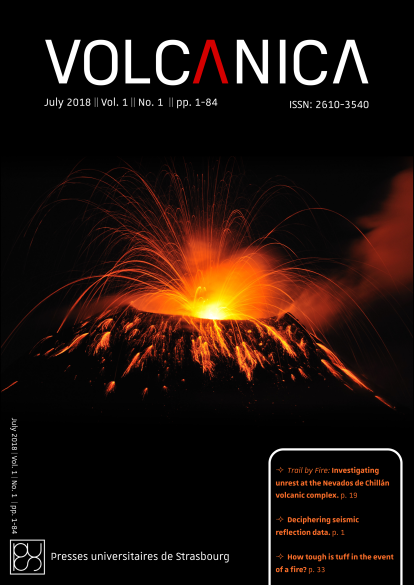Rapid hazard assessment of volcanic ballistic projectiles using long-exposure photographs: insights from the 2010 eruptions at Tungurahua volcano, Ecuador
Main Article Content
Abstract
Assessing hazard associated to volcanic ballistic projectiles is essential to limit fatal incidents close to erupting vents. Current state-of-the-art methods using high-speed visual and thermal images and volcanic radars permit to obtain high resolution information during explosive events but are limited to few laboratory volcanoes. Nowadays, long-exposure photographs at erupting volcanoes have become common and can be used to obtain meaningful information. In this paper I present a method to extract volcano-physical data from the projectile parabolic trajectory after adequate scaling and projection. The results, obtained from the analysis of 28 photographs from three eruptive phase at Tungurahua volcano in 2010, allowed to constrain the geometry of the vent (20 m-diameter for the upper conduit and 70 m-diameter inner crater), the diameter of the ballistic projectiles (up to 4.3 m), their launching angle (50 to 90°), their minimum launching velocity (40 to 145 m.s-1), and their maximum distance reach (up to 1330 m from the vent). This turnkey method can help to characterize eruptive dynamics as well as to perform rapid hazard assessment at dangerously explosive erupting volcanoes.
Downloads
Article Details
© The Author(s).
Submission of an original manuscript to Volcanica will be taken to mean that it represents original work not previously published, and not being considered for publication elsewhere.
The Creative Commons Attribution 4.0 International License permits unrestricted use, distribution, and reproduction in any medium, provided you give appropriate credit to the original author(s) and the source, provide a link to the Creative Commons license, and indicate if changes were made.
Accepted 2018-05-23
Published 2018-06-04





